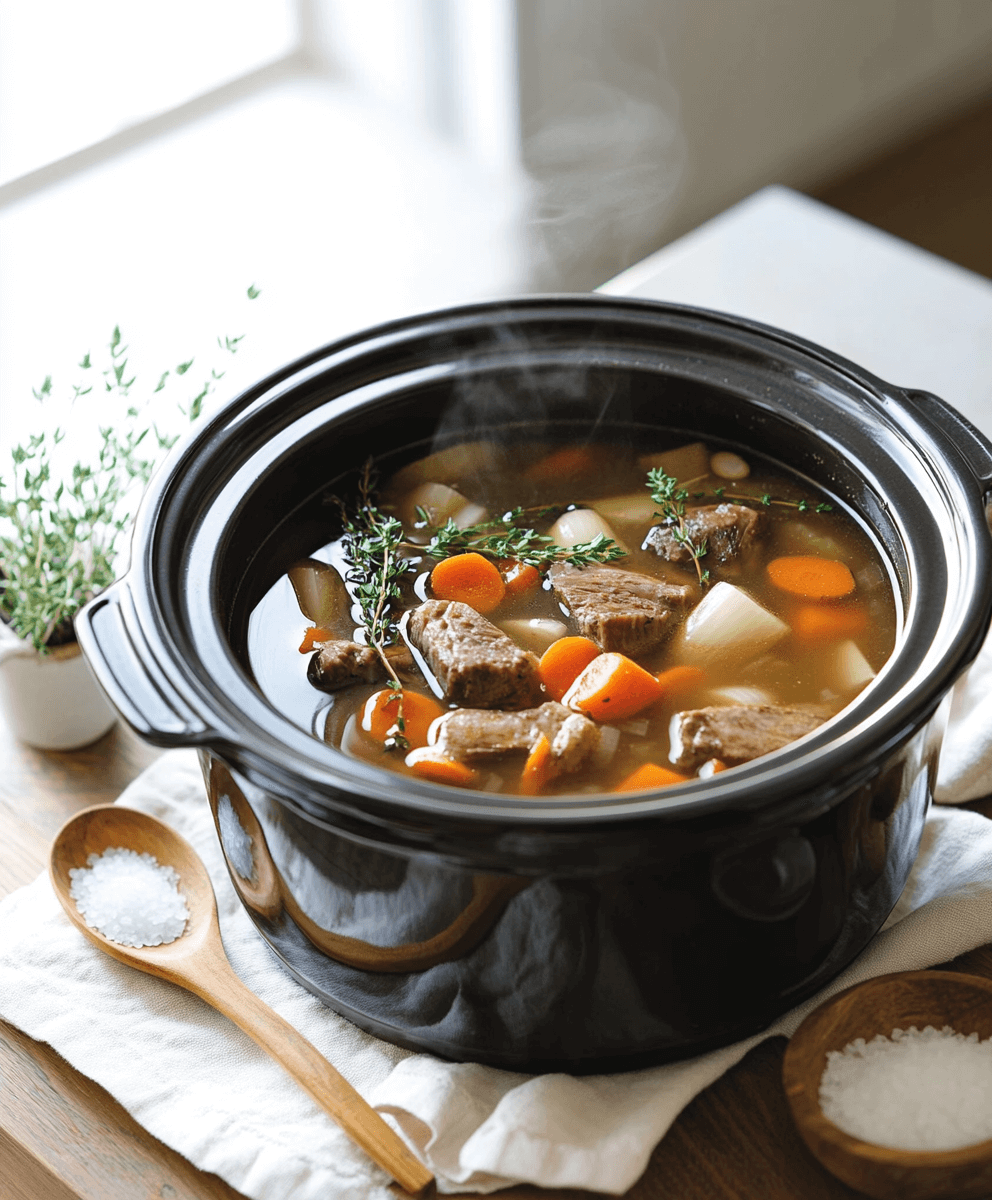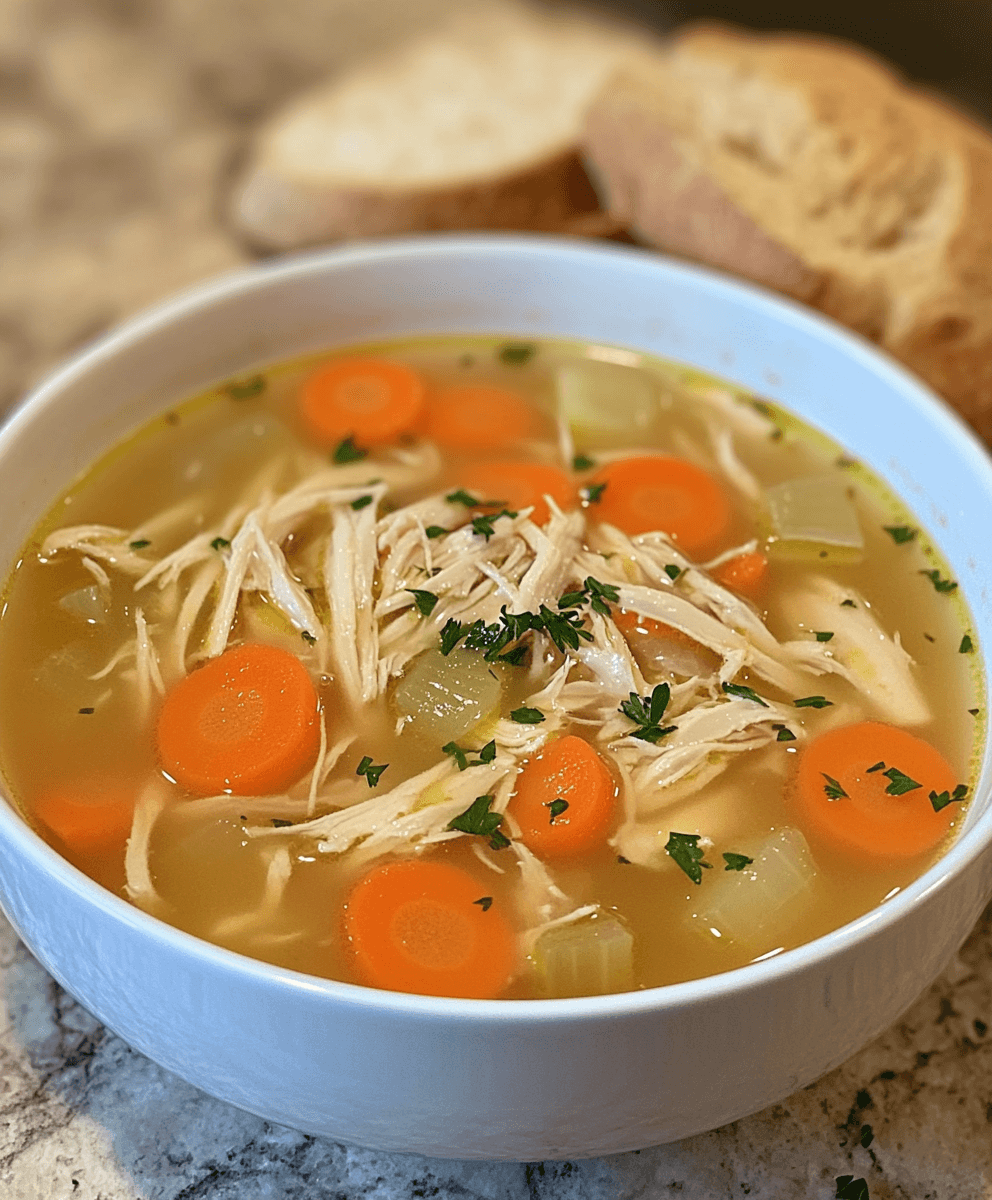Soup bones are a hidden gem in the culinary world, packed with flavor and nutrition. Sourced from beef, chicken, pork, or lamb, these bones form the foundation of rich broths and soups, transforming simple dishes into deeply satisfying meals. Whether you’re making a comforting chicken noodle soup or an aromatic pho, soup bones elevate the taste with their ability to infuse layers of flavor.
In addition to their culinary appeal, soup bones offer significant health benefits. Rich in collagen, they support skin elasticity, joint health, and digestion. Cooking extracts gelatin and marrow, providing essential nutrients like vitamins, minerals, and healthy fats. Soup bones are a great choice if you want to enhance your meals while embracing more nutritious eating habits. Let’s explore ten delicious recipes showcasing this incredible ingredient’s versatility.
What Are Soup Bones and Why Are They Essential for Cooking?
What Are Soup Bones?
Soup bones are cuts of bone, often with attached meat, cartilage, and connective tissue, specifically chosen for making broths and soups. When simmered, they release collagen, marrow, and gelatin, creating a flavorful, nutrient-rich liquid that serves as the base for soups, stews, and sauces.
Types of Soup Bones
Each type of soup bone offers unique flavors for different dishes:
- Beef Bones: Marrow bones, knuckle bones, and oxtails create hearty broths ideal for dishes like beef stew or pho.
- Chicken Bones: Chicken carcasses, necks, and backs make mild broths, perfect for chicken soup or risotto.
- Pork Bones: Ham hocks and neck bones deliver rich, slightly sweet broths for ramen or split pea soup.
- Lamb Bones: Ideal for Mediterranean-inspired broths or barley soup, lamb bones have a distinctive flavor.
These versatile ingredients allow for endless culinary creativity.
Health Benefits of Soup Bones
Soup bones provide a range of nutrients that support overall health:
- Collagen and Gelatin: Promote joint health, skin elasticity, and digestion.
- Marrow: Contains essential vitamins (A, K2) and minerals (iron, zinc).
- Minerals: Simmering releases calcium, magnesium, and phosphorus, strengthening bones and teeth.
- By incorporating bones into your cooking, you create both flavorful and nourishing meals.

Tips for Preparing and Cooking Soup Bones
Roasting Soup Bones for Flavor
Roasting enhances the flavor of your broth by caramelizing the natural sugars in the bones and meat.
- Preheat your oven to 400°F (200°C).
- Place the bones on a baking sheet or roasting pan, optionally adding vegetables like onions and carrots.
- Roast for 30–45 minutes until golden brown.
- Transfer the bones to your stockpot or slow cooker for simmering.
Simmering Soup Bones for Broth
Simmering allows the bones to release their nutrients and flavors.
- Simmer beef or pork bones for 12–24 hours and chicken bones for 6–12 hours.
- Keep the heat low to avoid boiling, resulting in a cloudy broth.
- Add aromatics (onions, garlic, carrots, celery) and spices (bay leaves, thyme, peppercorns) for depth.
- Skim any impurities that rise to the surface for a clean, clear broth.
Using a Slow Cooker or Pressure Cooker
For convenience, simmer the broth in a slow cooker on low for 12–24 hours or in a pressure cooker for 2–4 hours. Both methods yield flavorful results with minimal effort.

10 Delicious Recipes You Can Make with Soup Bones
1. Classic Beef Bone Broth
Simmer beef bones with onions, garlic, carrots, and herbs for hours to create a rich, gelatinous broth brimming with flavor. Add a splash of apple cider vinegar to extract maximum nutrients from the bones. This versatile broth can be used as a base for soups and stews or even enjoyed as a nourishing drink.
2. Chicken Soup with Bone Broth
Combine chicken bone broth with shredded chicken, egg noodles, and a medley of seasonal vegetables like carrots and celery for a warm, comforting dish. Add fresh parsley or thyme for extra flavor, making it a perfect meal for cold days or when you’re feeling under the weather.
3. Pork Ramen Broth
Simmer pork bones with garlic, ginger, and soy sauce to create a broth with umami flavor. Add ramen noodles, soft-boiled eggs, nori sheets, and sliced scallions for a hearty bowl of Japanese-inspired comfort. A sesame or chili oil drizzle can enhance the flavors even more.
4. Vegetable Soup with Soup Bones
Simmer soup bones with zucchini, tomatoes, kale, and your favorite vegetables to create a light yet satisfying meal. The bones enrich the broth with flavor, while the fresh produce adds vibrant color and nutrients. Sprinkle some grated Parmesan or fresh herbs for a finishing touch.
5. Pho (Vietnamese Soup)
Craft a fragrant broth by simmering beef or chicken bones with star anise, cinnamon, cloves, ginger, and onion. Serve with rice noodles, fresh herbs like cilantro and basil, lime wedges, and thinly sliced beef or chicken. The combination of spices and fresh toppings makes pho a sensory delight.
6. Oxtail Soup
Slow-cook oxtail bones until the meat becomes tender and the broth thickens with natural gelatin. Add hearty vegetables like carrots, potatoes, and parsnips for a satisfying meal. A splash of Worcestershire sauce or a sprinkle of fresh parsley enhances the rich flavors.
7. Split Pea Soup with Ham Bones
Simmering split pea soup with ham bones infuses it with a smoky flavor. The peas break into a creamy consistency, while the bones add depth and richness. Serve with crusty bread or croutons for a comforting and filling meal.
8. Lamb Bone Barley Soup
Combine lamb bones with barley, diced root vegetables like carrots and turnips, and fresh herbs like rosemary or thyme for a Mediterranean-inspired dish. The barley thickens the broth, making it a hearty, protein-packed option for cold evenings.
9. Tomato and Bone Broth Soup
Blend roasted tomatoes with chicken or beef bone broth for a tangy and nutrient-rich soup. Add garlic, onions, and a touch of cream for smoothness. Top with fresh basil leaves, croutons, or a drizzle of olive oil for a satisfying starter or light meal.
10. Bone Broth Risotto
Use bone broth to make a creamy and flavorful risotto. Slowly ladle the broth into Arborio rice while stirring, then add mushrooms, asparagus, or seafood for added richness. Finish with grated Parmesan cheese and a sprinkle of chopped parsley for an elegant, gourmet dish.

How to Store and Reuse Soup Bones and Broths
Freezing Soup Bones
Freeze raw or cooked soup bones in airtight containers for up to six months. Label them with the date for easy tracking.
Storing Broth
You can refrigerate broth in airtight containers for up to 5 days or freeze it in portion-sized containers for up to 6 months.
Reusing Bones
Combine soup bones with fresh aromatics to reuse them for a second or even third batch of broth. Stop using bones once they stop releasing gelatin or flavor.

Conclusion
Soup bones are a versatile and nutritious ingredient that can transform your cooking. From classic broths to creative dishes like risotto, their ability to infuse flavor and nutrients makes them indispensable in the kitchen. Try these recipes, experiment with your variations, and enjoy the richness they bring to your meals.
We’d love to hear your favorite soup bone recipes! Please share your ideas in the comments below and tag us when you create your culinary masterpieces. Happy cooking!






